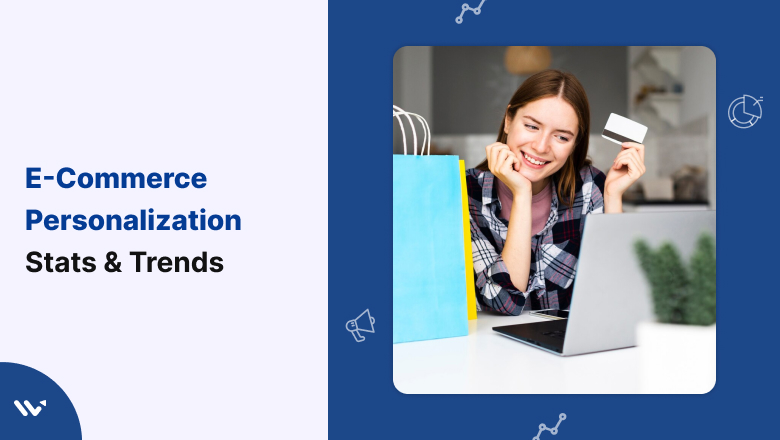Ecommerce personalization is a data-backed strategy that empowers businesses to deliver the right message to the right customer at the right time.
Consumers expect personalization, with studies showing that 47% to 76% of consumers anticipate personalized interactions with brands.
When done effectively, personalization can increase revenue by 10% or more. But where do you start?
The following ecommerce personalization statistics provide a roadmap for understanding the impact of personalization at every stage of the customer lifecycle – from acquisition to retention.
Build trust & FOMO
Highlight real-time activities like reviews, sales & sign-ups.
Top Ecommerce Personalization Statistics
- Over 50% of consumers share personal info for personalized offers.
- 90% want a consistent experience across sites.
- AI personalization boosts retail growth by 15%.
- 96% of retailers struggle with personalization.
- 60% of women make impulsive clothing buys.
- 81% of fashion sales are on mobile.
- 44% return with personalized service.
- 4 out of 5 retailers see positive ROI with personalization.
- Personalization cuts new customer costs by 50%.
Why Ecommerce Personalization Matters
Ecommerce personalization matters because it allows you to tailor the shopping experience to each individual’s unique needs and preferences, resulting in increased conversions, higher customer satisfaction, and customer loyalty.
Personalization can impact various customer journey phases, from pre-purchase to post-purchase experiences, by understanding consumer preferences and meeting customer demands.
1. 81% like it when ecommerce brands tailor their experience to their individual needs.
2. Even more importantly, 70% say personalized experience makes them feel known.
By delivering the right products, recommendations, and offers at the right time, you can build strong relationships with your customers, bring repeat business, and stay ahead of the competition.
Customer Engagement
3. Emails tailored to customer preferences achieve a 29% higher open rate and a 41% higher click-through rate.
Email lists are based on customer behavior and preferences, and sending targeted content similar to each part leads to higher engagement.
Personalized communications can drive brand loyalty and make consumers more likely to purchase from brands.
Reduced Bounce Rates
4. Personalized content and product recommendations can reduce bounce rates by up to 45%.
Personalize the website experience by showing returning visitors content and products based on their previous interactions and preferences, reducing bounce rates.
Build trust & FOMO
Highlight real-time activities like reviews, sales & sign-ups.
Increased Revenue
5. Personalized product recommendations can increase revenue by up to 26%.
Implement AI-driven recommendation engines that analyze user behavior and preferences to suggest relevant products, increasing the likelihood of purchase.
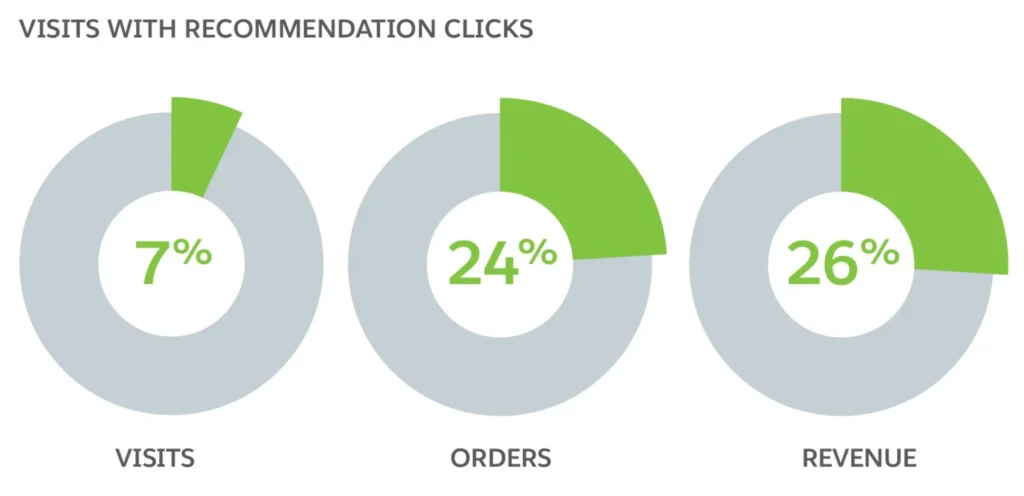
The Impact of Personalization on Key Metrics
The essentials of ecommerce personalization involve collecting customer data, identifying key segments, and tailoring the experience to individual needs and preferences.
This includes personalizing search, recommendations, and pricing while being transparent about customer data.
Personalization increases conversions and sales, strengthens customer loyalty and engagement, and improves overall customer satisfaction.
By tailoring the experience to individual needs, businesses see a significant lift in performance and revenue with these ecommerce personalization statistics.
Conversion Rate Lift
6. Segmented and targeted marketing campaigns based on customer data can increase conversion rates by 50%.
7. Utilizing behavioral data for targeted ads and personalized content can increase conversion rates by 10%.
8. 90% of leading marketers say that ecommerce personalization is directly proportional to profitability, which means that it highly signifies the profit of a business.
Increased Revenue Attributable
9. Personalization strategies on e-commerce platforms can lead to a 20% increase in sales.
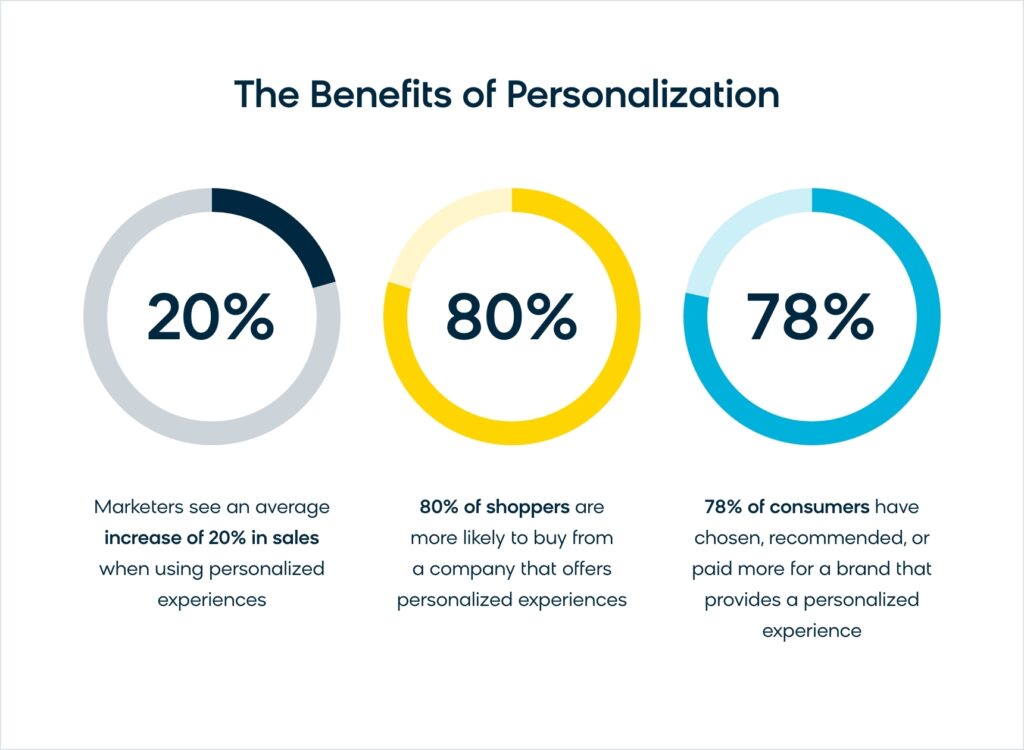
10. Companies that prioritize personalization in their marketing and customer experience personalization strategies see an average revenue growth of 6-10%.
11. Personalization can lead to a 10-15% increase in conversion rates across various industries.
Curious about the future of the e-commerce industry? Discover it here: 100+ ECommerce Statistics & Trends
Average Order Value
12. Segmented and personalized email campaigns can generate 6 times higher transaction rates and AOV than non-personalized emails.
13. Providing personalized offers based on customer behavior can lead to a 20% higher AOV than generic promotions.
14. Personalized cross-selling and upselling efforts can boost AOV by 10-30% and are around 68% more affordable.
Website Personalization Statistics
Website personalization enhances customer experience and builds trust by providing tailored content and recommendations, thus increasing loyalty and engagement.
By delivering relevant experiences, personalized websites increase conversions and differentiate brands, creating a competitive advantage.
This approach allows businesses to connect with their audience more effectively, driving growth and success.
Personalized Product Recommendations
15. Personalized product recommendations increase average order value (AOV) by 369% compared to generic recommendations.
Emails with personalized subject lines are more likely to be opened, increasing engagement.
16. Personalized product recommendations account for up to 31% of e-commerce site revenues.
17. Personalized product recommendations increase conversion rates by 288%.
18. Personalized product recommendations can reduce cart abandonment by up to 4.35%.
Also, look at: Cart Abandonment Statistics: $18 Billion in Annual Losses
Build trust & FOMO
Highlight real-time activities like reviews, sales & sign-ups.
Dynamic Content: How Tailoring Boosts Engagement
19. 76% of consumers are more likely to purchase from brands that provide personalization.
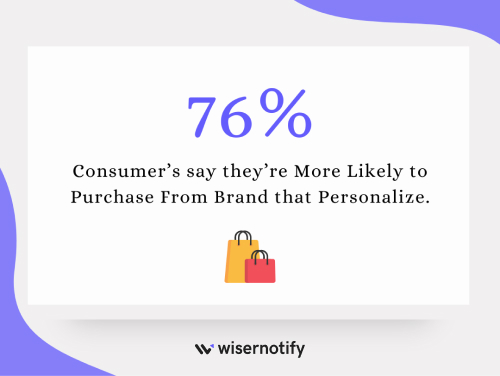
20. 59% of people believe that personalized engagement based on past interactions is important to achieve success in their business.
21. 71% of people like having personalized experiences, which can influence their email interactions.
22. Around 56% of users will return back to a website that keeps recommending products based on their preferences.
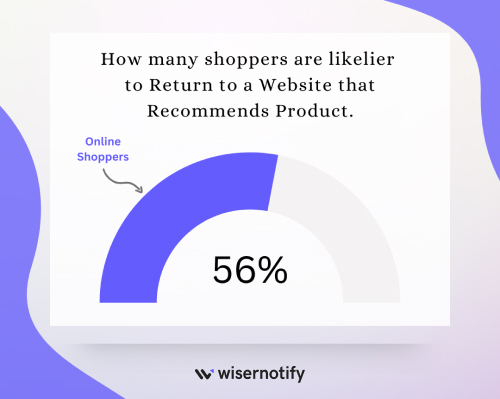
Personalized Search Results
23. Personalized search results can increase conversion rates by up to 50%.
24. 11.7% of search results show differences due to personalization. However, this result varies widely.
25. Mobile searches for personalization have grown by 60% in the past two years.
Customer-Centric Personalization
Customer-centric personalization puts the customer in the highlight, tailoring experiences to their unique needs and preferences.
It’s about understanding their behaviors, interests, and goals to deliver better interactions.
Take strategies to understand your shoppers while personalizing. By doing so, you build trust, loyalty, and lasting relationships.
Here are the ecommerce personalization statistics and strategies:
Use Customer Data
26. According to McKinsey’s research, companies that leverage customer behavior and achieve results like 85% in sales growth and over 25% in gross margin.
27. Ecommerce brands that leverage first-party data in their marketing efforts see a significant boost in revenue with 2.9 times increase and 1.5 times increase in cost savings.
28. Only a minority of 15% of CEOs are completely satisfied with their company’s measures for customer experience.
Preference-Based Personalization
29. Preference-based personalization can lead to a 15% rise in customer retention and a 20% increase in sales.
30. Customers who receive personalized experiences based on their preferences have a 33% higher lifetime value.
Personalized shopping experiences can lead to customer loyalty and encourage shoppers to become repeat buyers.
31. 89% of businesses see a rise in ROI when they use personalization
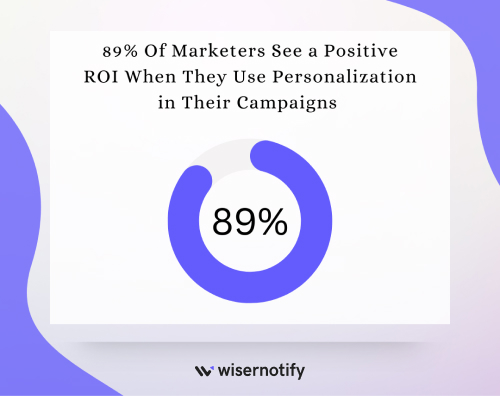
32. 89% of companies say they see a positive ROI when they use personalization in their campaigns.
33. 9% of retailers say they see $20 on every dollar they spend, whereas 11% earn less than a dollar.
34. Personalization reduce customer acquisition cost of up to 50%
35. Personalization can lead to a significant reduction in customer acquisition costs, up to 50%, and a substantial increase in revenues, ranging from 5% to 15%. Additionally, it can optimize marketing spending efficiency by 10% to 30%.
Build trust & FOMO
Highlight real-time activities like reviews, sales & sign-ups.
Behavioral Data in Personalization
36. 71% of online customers expect to get personalized options from companies, and 76% get frustrated when they don’t receive them.
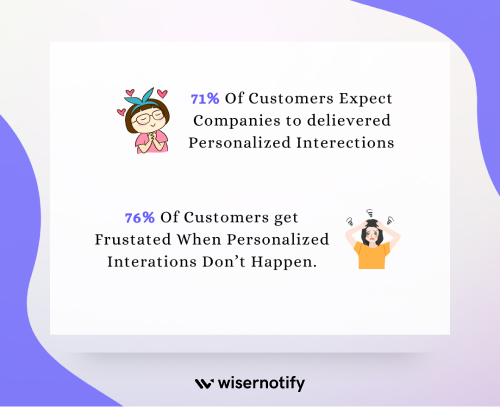
37. Personalization using behavioral data can increase conversion rates by up to 20%, and 40% of online customers say it has directly affected sales.
38. 44% who experience personalization come back
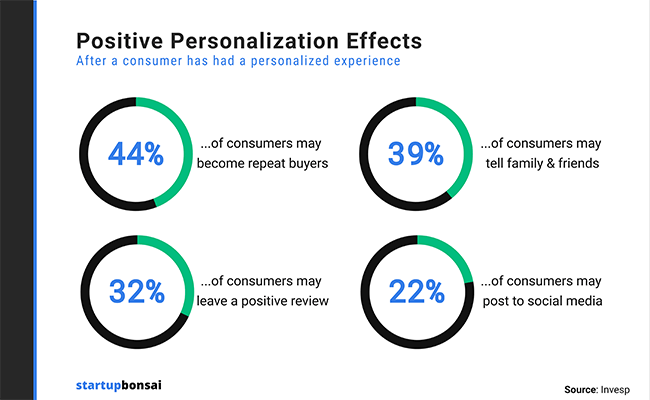
39. Behavioral data-driven personalization can improve customer retention rates by 44%.
Personalization helps businesses build strong customer relationships and loyalty by giving customers what they want and need.
It sets businesses apart from others and increases sales.
40. 66% of people want companies to understand what they want or need from them, which is better customer service.
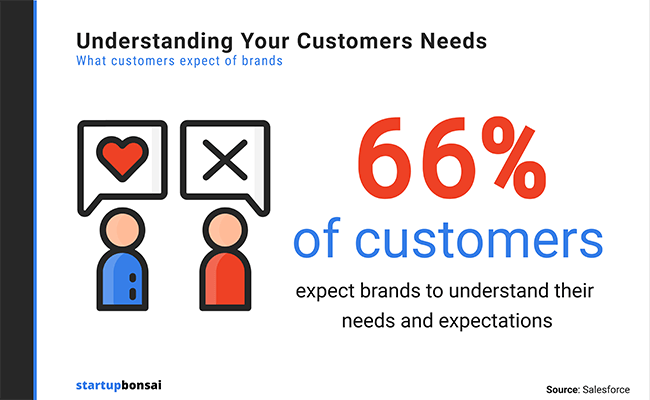
Personalization Statistics on Trust
41. 26% of consumers from the UK will not spend money on brands they do not trust with personalization or handling data.
42. 81% of consumers think that how a company treats their private information indicates what it thinks about them.
The majority of consumers are willing to share personal data in exchange for personalization
43. 57% of consumers are willing to share their personal information in exchange for personalized offers or discounts, indicating that consumers are getting more comfortable with data-driven marketing.
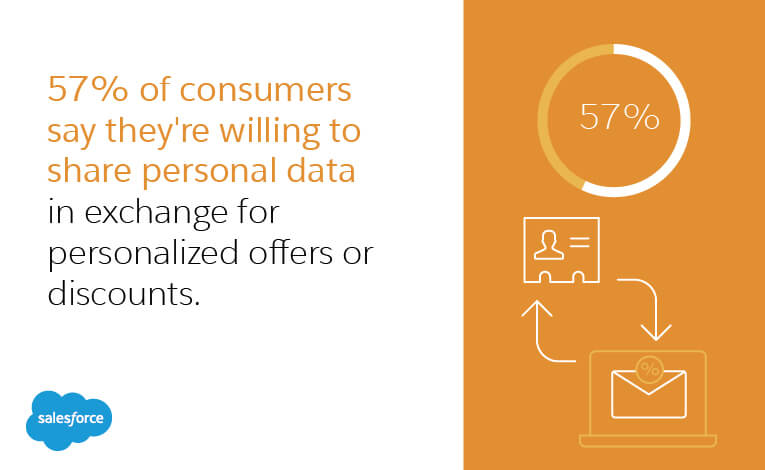
44. Moreover, 62% of consumers agree with companies sending personalized offers based on past purchases.
45. 73% of consumers value transparency in how their data is used and shared and prefer to have access to it rather than delete it whenever they wish to.
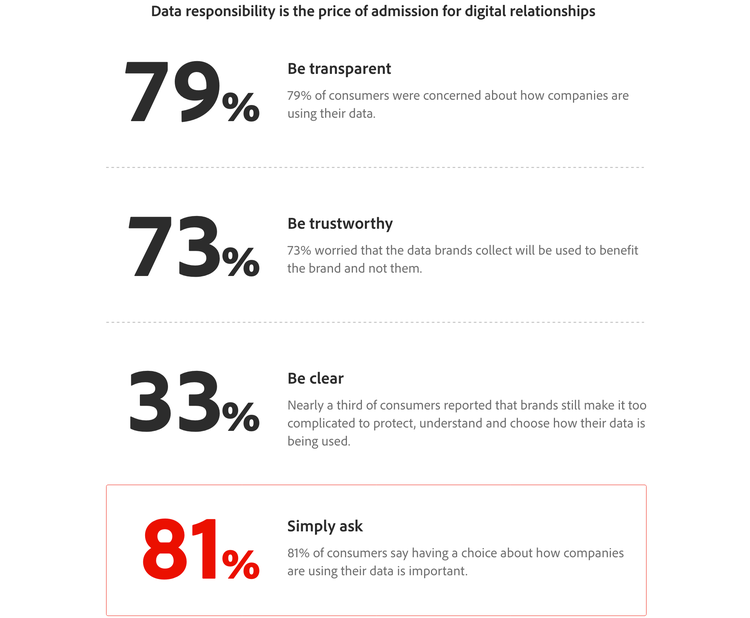
Omnichannel Personalization Statistics
46. 73% of consumers use multiple channels during their shopping journey, expecting a seamless experience.
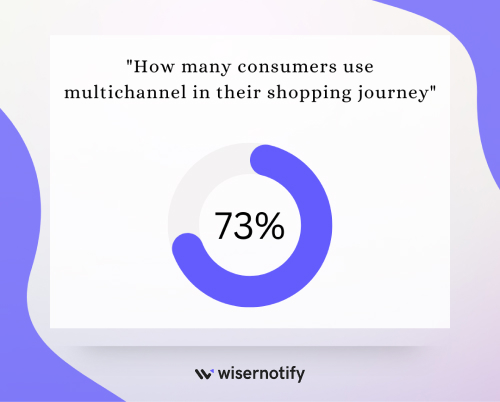
47. 80% of customers are more likely to purchase from a brand that offers personalized experiences across online and offline channels.
Consumers expect brands to offer targeted promotions as part of personalized experiences.
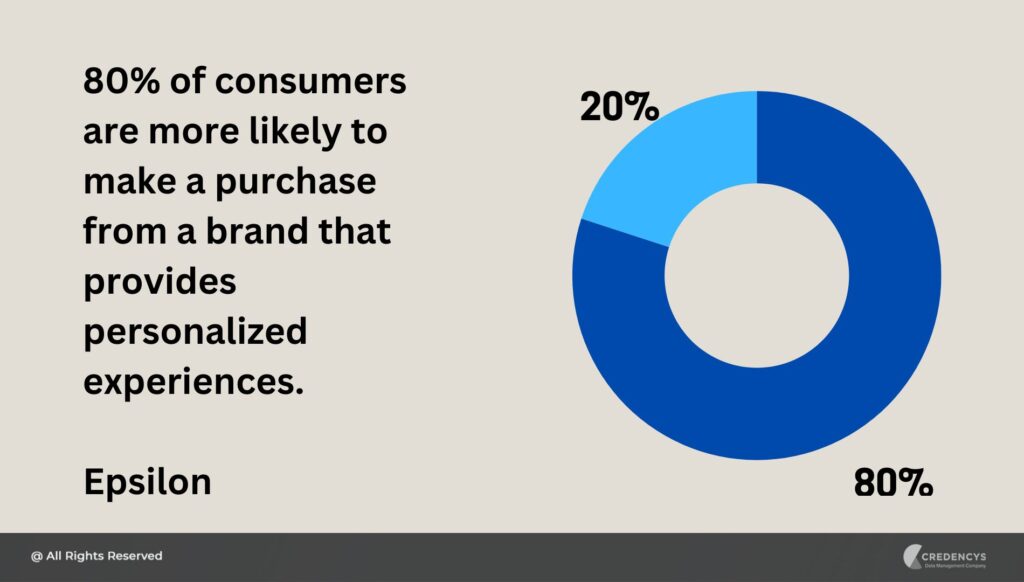
48. 90% of consumers expect consistent interactions across channels and think brands must put more effort into providing a seamless experience.
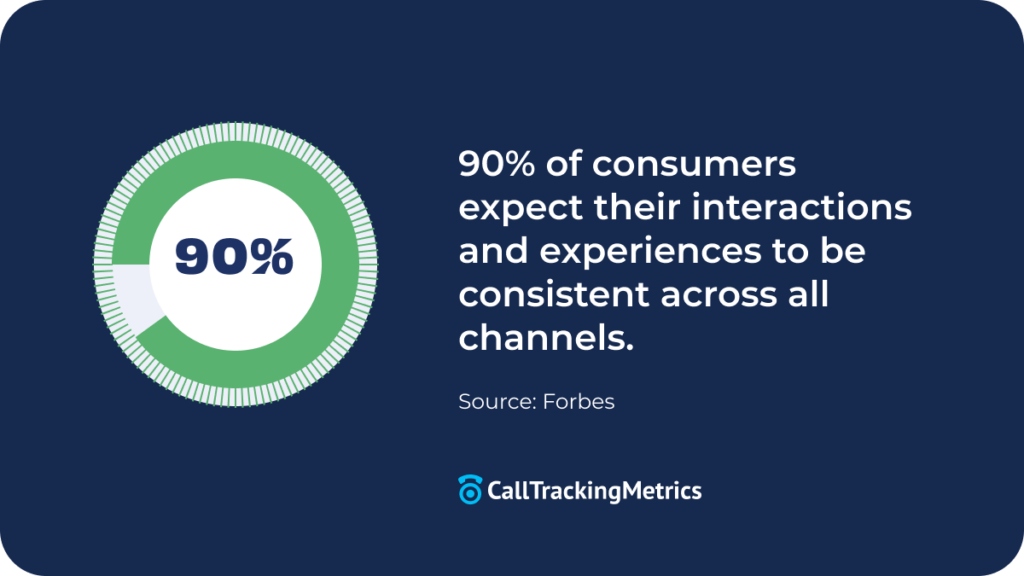
49. And 89% say they get frustrated after being repeatedly asked to repeat themselves. The omnichannel approach can solve this issue.
50. 43% of companies believe that real-time personal data is the most difficult strategy for personalization efforts.
Personalization Across Different Sectors
Personalization is transforming e-commerce across various industries, from fashion to food delivery.
Businesses are using data and technology to offer tailored experiences, driving engagement and sales
. You must understand customer needs and look at these e-commerce personalization statistics to stay ahead.
Ecommerce Personalization Statistics in Fashion
51. 60% of women make impulsive decisions when it comes to clothing.
This shows that online stores successfully use various marketing techniques like interesting content, targeted ads, and limited-time offers, which are personalized to customer preference to increase sales and attract customers.
52. The higher the customer relation, the more the revenue is driven by e-commerce personalization. The lowest is around 5 to 10%, and the highest is over 25%.
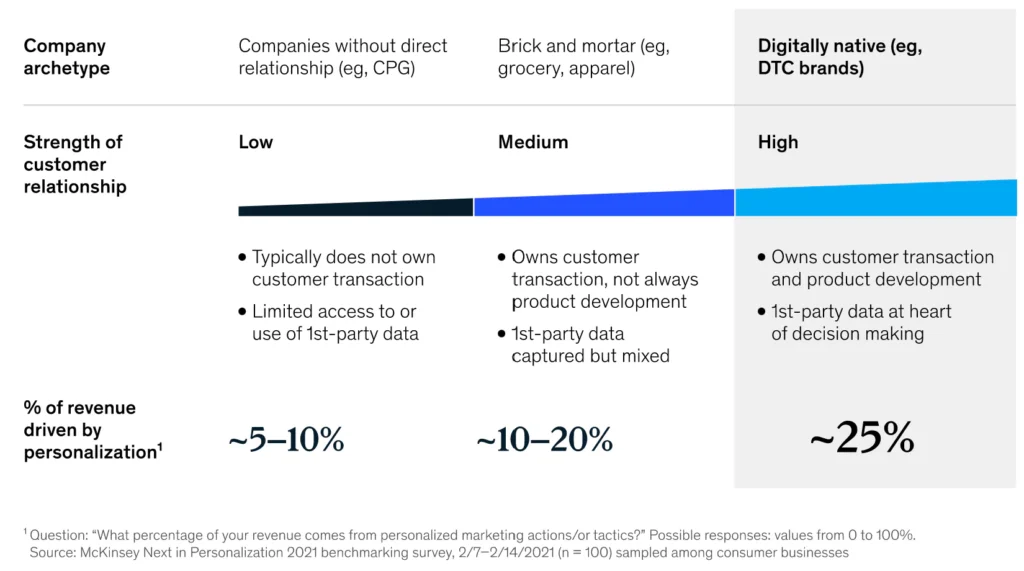
53. 72% of US consumers are aware of sustainability and environmental issues in fashion and wish to have more sustainable and eco-friendly options.
54. 81% of transactions related to fashion industries occur on mobile
Also check out: 20+ Mobile Commerce Statistics & Trends
Consumers prefer using mobile devices while making transactions for their fashion purchases.
55. 81% of consumers use mobile devices, while 20% use desktops.
Businesses need to offer mobile-friendly purchase options that are easy to navigate and quick to load, and they need products on display that can fit on small screens.
Ecommerce Personalization Statistics in Tech
56. Tech companies using personalized email campaigns report a 41% higher click-through rate and a 29% increase in open rates.
57. 96% of retailers find difficulty in implementing personalization, including tech
58. 96% of retailers face challenges with personalization, including technical limitations, finding the right partners, and team alignment issues, hindering effective personalized marketing and customer experiences.
59. Zebra Technologies’ website improvements led to a 45% drop in bounces and a 29% rise in form submissions due to opting for personalization.
Build trust & FOMO
Highlight real-time activities like reviews, sales & sign-ups.
E-commerce: Sector-Specific Personalization
Zohoor introduced the Mixology Journey, which allows customers to create personalized perfume blends.
60. This resulted in a 12.5% increase in conversion rates.
61. One in five US consumers and one in three millennials prioritize personalized products and services.
AI-Powered Personalization Statistics
62. Businesses grow by 15% with AI personalization
63. AI-powered personalization can boost retail profits by 15% and cut marketing costs by 20%, making marketing efforts more efficient and effective.
64. AI-driven product recommendations can boost conversion rates by 915% and average order values by 3%.
65. 76% of consumers are frustrated when companies fail to offer personalized experiences, underscoring the importance of AI in meeting customer expectations.

66. AI-powered product recommendations can lead to a significant 10-30% surge in sales, and nearly 45% of online shoppers are more likely to purchase on websites that offer personalization.
Ecommerce Personalization Trends
Ecommerce personalization is revolutionizing the online shopping experience.
Personalization is becoming increasingly crucial for businesses to stay competitive as technology advances.
These ecommerce personalization statistics show the future of trends and technologies that are revolutionizing continuously.
How businesses connect with customers is a huge deal, and trends must be focused.
Here are some ecommerce personalization trends that are expected to see in the future of e-commerce:
AI and ML
Advanced AI and machine learning algorithms will have hyper-personalized experiences by analyzing real-time customer data and predicting consumer behavior more accurately.
67. By 2030, AI in ecommerce personalization is expected to drive a 30% increase in revenue for retailers leveraging these technologies.
Voice commerce
Voice-activated shopping will become more prevalent, with AI assistants providing personalized recommendations based on voice interactions.
68. Voice commerce is believed to account for 30% of all e-commerce sales by 2030.
AR and VR
AR and VR technologies will create better shopping experiences, allowing consumers to virtually try products before purchasing.
69. The AR and VR retail market is expected to grow to $1.6 billion by 2025, enhancing personalization and reducing return rates.
IoT
The Internet of Things (IoT) will enable smart devices to collect data and provide highly personalized shopping experiences based on consumer behavior.
70. IoT-connected devices are expected to reach 75.4 billion by 2025, driving hyper-personalization in e-commerce.
Wrap up
Ecommerce personalization isn’t just a trend; it’s a necessity. The numbers speak for themselves: higher conversions, increased revenue, improved customer satisfaction, and stronger brand loyalty are all within reach.
By leveraging customer data, AI-powered tools, and omnichannel strategies, businesses can create tailored experiences that resonate with shoppers and drive long-term success.
Key Takeaway: Don’t just sell products, build relationships. Personalization is the key to unlocking customer loyalty and achieving sustainable growth in the competitive ecommerce landscape.
Sources
